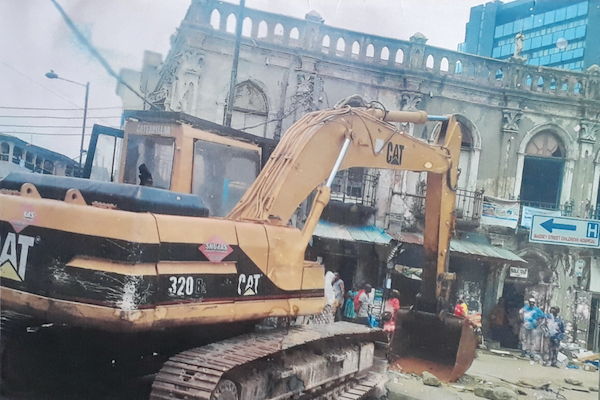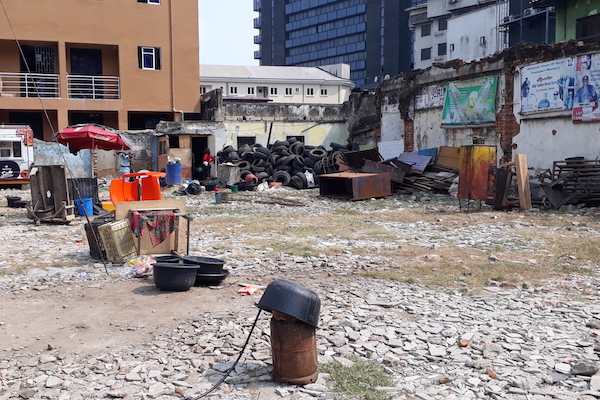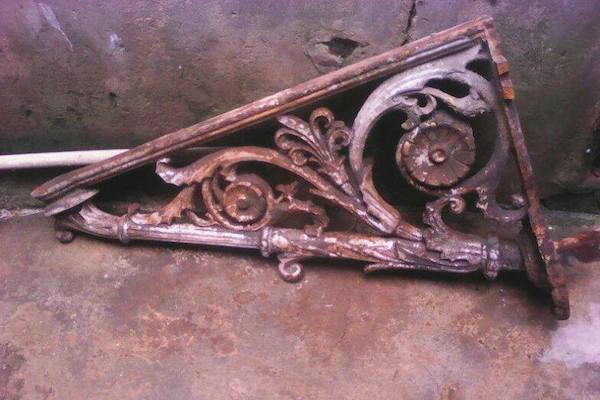Illegal demolition
Rising from the Rubble: The Consequences of Ilojo Bar's Illegal Demolition
On a quiet Sunday in 2016 bulldozers struck. It was September 11 and a Muslim holiday. The people in the building were woken up by the ruckus in the early hours of the morning, and did not even have time to gather their belongings. By that same evening, the monumental building once called Casa do Fernandez had been razed to the ground. Its unique features like the wrought iron balcony ornaments were sold on the street for as little as 700 naira.

Armed soldiers and policemen guarded the bulldozers that developer Otunba Arowogbola had brought, and he could also show a demolition permit granted by the Lagos State Physical Planning Permit Authority (LASPPPA) on April 29. What he did not show, was the letter from that same LASPPPA retracting this permit in July of that year. The National Commission for Museums and Monuments had quickly notified the state agency that it had no right to grant a demolition permit for Ilojo Bar as it was protected under the law as a National Monument. A well known fact the state agency should have been aware of, but seemed to have forgotten.
The NCMM was warned about the imminent threat to the monument in May by an Olaiya family member who opposed the demolition. For decades the many co-owners – all descendants of one of the patriarch's eight wives –did not see eye to eye on what to do with the property. They had already been to High Court over it, which eventually led to a settlement in 2009 determining that the family property should be managed by an estate firm on behalf of the owners.

Victor Olaiya, the musician and son of the 7th wife, had tried to apply for the removal of the monumental status of Ilojo Bar, but was not successful. He made no secret of his frustration that nothing ever happened to the house, and he had rather see it make place for a modern development. Tinubu Square after all is an A location for real estate where money could be made.
However, the part of the family that had counted on cashing in after the demolition, was gravely disappointed. Not only did the Federal Government condemn the demolition as illegal, it also became clear that as the land remained protected by the Law for Museums and Monuments, nothing could be built on it without the consent of the NCMM. The NCMM took the family members who had collided with the developer to have the building demolished to court. It was that stalemate that forced the family and the NCMM around the table.

The statuette on top of the building, popularly called the angel, was the only artefact that was saved from Casa do Fernandez. Its return – be it in a severely damaged state – was the high point of the official gathering in Lagos' National Museum on January 15, 2021. The Olaiya family had come to sign a Memorandum of Understanding with the NCMM about the revival of Ilojo Bar. They agreed that a new structure would be built in lieu of the old monument. Architect Theo Lawson designed the front as an architectural homage to the Brazilian building style of Casa do Fernandez, and drew a high rise shopping complex in its back.
